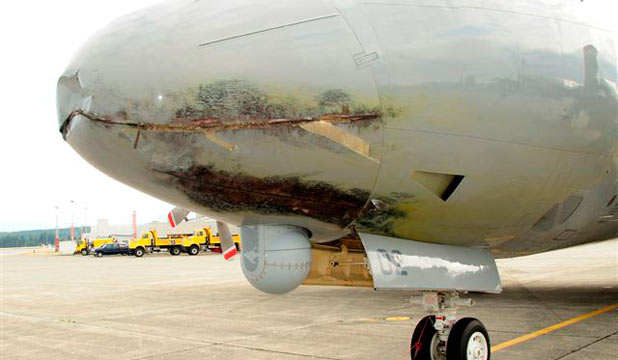| Lightning |

http://www.livescience.com/32638-do-planes-get-struck-by-lightning.html
 http://www.kongregate.com/forums/9-serious-discussion/topics/46657-wouldyou-fly-if-you-knew-lightning-can-do-this-to-a-plane |
This is what
the damage from a lightning strike looks like. The
damage to the nose cone is very obvious, and could
be potentially deadly, but not likely. Due to the
shell of the plane taking the hit, the planes
electronics are able to still work, but the shell
will need repairs. The photo below gives a great visual of how lightning strikes a plane. The plane is surrounded by a conducting "sphere". The planes fly around the clouds, which can have a large capacitance. The cloud can then discharge that into the plane, and create massive amounts of power. The shell of the plane will then take the hit, and the materials will not allow transfer of electricity inside to the passengers (Pappas, 2010). This allows planes to fly safely through storms. The plane itself might endure damage, but in most cases the passengers will land safely back on the ground. |

Introduction | Aerodynamics | Heat Engines | Types of Engines | Lightning | Bibliography
All Right Reserved © 2006 by bprizze
http://heartlessg.4uhost.info Web Master